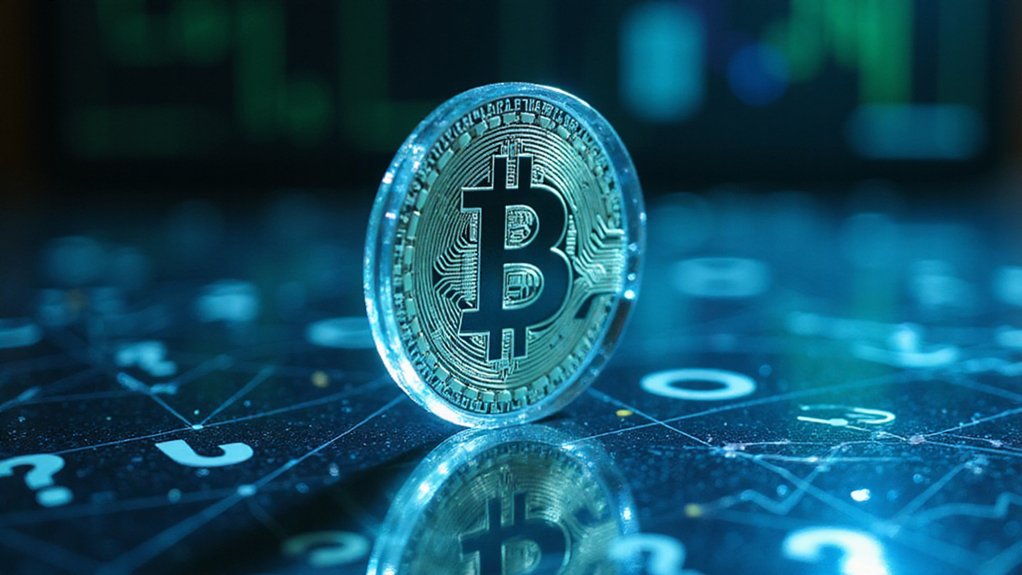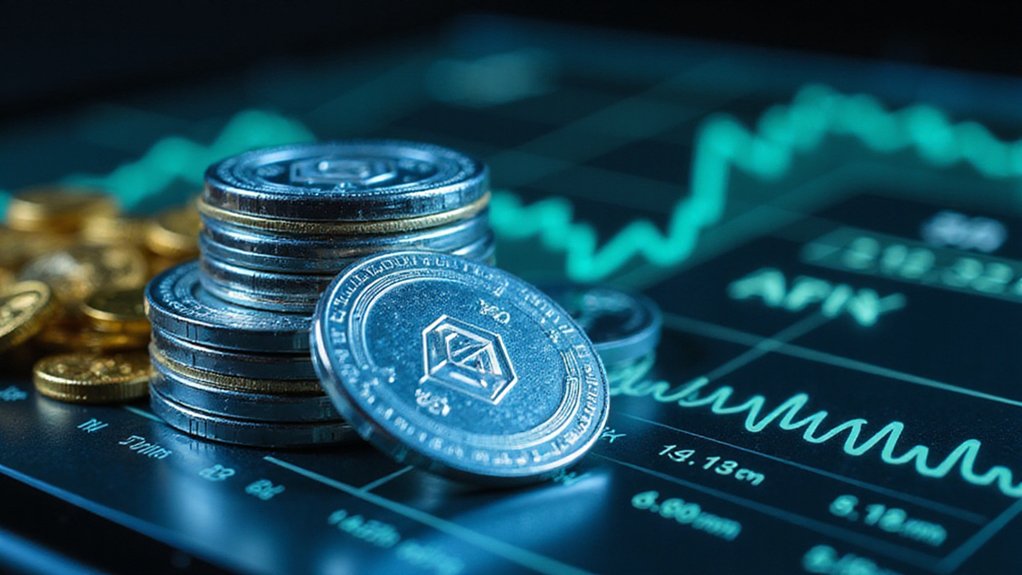Kaanch Network, launched in 2023, boasts impressive technical specs—1.4 million transactions per second with 0.8-second block times—yet remains in cryptocurrency’s gray zone of legitimacy. Despite raising $1.12 million and offering eye-watering 119% APY yields, skepticism persists. While its architecture appears fundamentally sound, with multi-chain interoperability and near-zero gas fees, the project’s ultimate legitimacy hinges on delivering beyond its ambitious promises. The cryptocurrency graveyard, after all, overflows with revolutionary claims.

When does a new cryptocurrency transcend the domain of speculative digital assets to become a legitimate contender in the blockchain ecosystem?
This question looms particularly large for Kaanch Network, a fledgling Layer 1 blockchain platform established in 2023 by Rahul Kumar and Ved Singh that has generated considerable buzz in digital asset circles.
Kaanch positions itself rather ambitiously at the intersection of speed, scalability, and security—the holy trinity of blockchain aspirations.
The technical specifications certainly raise eyebrows: processing capabilities of 1.4 million transactions per second (a figure that dwarfs established networks), block times of 0.8 seconds, and a validator network comprising 3,600 nodes.
These metrics, if verifiable, would place Kaanch among the most technically advanced blockchain infrastructures in existence.
The platform’s ecosystem appears deliberately constructed to address contemporary blockchain limitations, offering interoperability bridges with Ethereum, Solana, and BNB Chain, while implementing an extensive real-world asset tokenization framework—catnip for institutional investors seeking regulatory clarity in the often murky waters of digital assets.
What distinguishes Kaanch from the endless parade of blockchain pretenders is its focused approach to practical applications across Web3, DeFi, and AI integration.
The network’s near-zero gas fees (a persistent pain point for Ethereum users) coupled with its DAO governance structure suggests a thoughtful architecture designed for genuine utility rather than mere speculation.
The platform’s promise of instant token swaps and real-time staking rewards further positions it as a user-friendly alternative to existing DeFi solutions.
Market reception has been remarkably enthusiastic, with thousands participating in presales and staking opportunities that offer—somewhat incredibly—yields approaching 119% APY.
Such returns naturally warrant skepticism in traditional finance circles, where anything exceeding treasury yields by several percentage points triggers immediate suspicion.¹
Kaanch’s presale has already gained significant traction, having raised over 1.12 million USD through its progressive funding stages.
The legitimacy question ultimately hinges on whether Kaanch can deliver on its technical promises while building a sustainable ecosystem beyond the initial hype cycle.
While the fundamentals appear sound, prudent observers might wait for more established validation before crowning Kaanch a legitimate cryptocurrency contender in an industry where revolutionary claims frequently outpace revolutionary delivery.
¹The cryptocurrency space often operates with different risk-reward paradigms than traditional finance.
Frequently Asked Questions
Who Are the Founders Behind Kaanch Coin?
Kaanch Network was founded by Ved Singh and Rahul Kumar in 2023, both of whom maintain fully public identities—a welcome departure from the anonymous architects typically lurking behind presale projects.
The duo brings substantial blockchain expertise and Web3 development experience to the table, having already raised over $1.12 million through ongoing presale stages.
Their visible leadership and technical credentials ostensibly bolster the project’s transparency credentials in an industry not exactly renowned for such virtues.
What Blockchain Technology Does Kaanch Coin Utilize?
Kaanch Network operates as a Layer-1 blockchain platform utilizing Delegated Proof of Stake (DPoS) consensus—a mechanism bearing notable similarities to Tron Network’s approach.
This infrastructure purportedly delivers remarkable performance metrics: 1.4 million transactions per second with 0.8-second block times and near-zero gas fees.
The network’s architecture allegedly incorporates AI-driven governance for smart contract optimization and claims to maintain security through approximately 3,600 decentralized nodes, ostensibly creating resistance against censorship and system failures.
How Does Kaanch Coin’s Pricing Compare to Established Cryptocurrencies?
Kaanch Coin’s pricing sits in an entirely different universe compared to established cryptocurrencies.
While Bitcoin and Ethereum command thousands per coin with billions in daily volume, Kaanch operates in the cents-to-dollars range with merely $3,300 daily trading volume.
Its wildly divergent price predictions ($0.045 to $50 for 2025) reflect its nascent, speculative nature.
Such astronomical valuation disparities—coupled with minimal liquidity—underscore the chasm between established blockchain assets and emerging tokens still seeking market validation.
Are There Any Celebrity Endorsements for Kaanch Coin?
Research indicates Kaanch Coin operates without celebrity endorsements in its marketing approach.
Unlike numerous cryptocurrency projects that leverage famous personalities to generate hype (often followed by predictable volatility), Kaanch has built its $1.12+ million presale presence through technical merits and practical utility propositions.
The project appears to prioritize substantive elements—code audits, transparent development, and real-world asset tokenization—over the fleeting attention celebrity affiliations might generate, a surprisingly innovative strategy in today’s influencer-saturated market.
What Security Measures Protect Kaanch Coin Investors?
Kaanch Coin purportedly implements robust security through its decentralized 3,600-node architecture, which—if the marketing materials are to be believed—eliminates single points of failure.
Investors supposedly benefit from AI-enhanced governance, advanced cryptographic protections against DDoS attacks, and standard exchange safeguards including 2FA, KYC/AML protocols, and regular security audits.
The platform also claims to offer secure tokenization infrastructure for real-world assets, complete with tracking capabilities to mitigate fraud risks during transactions.









